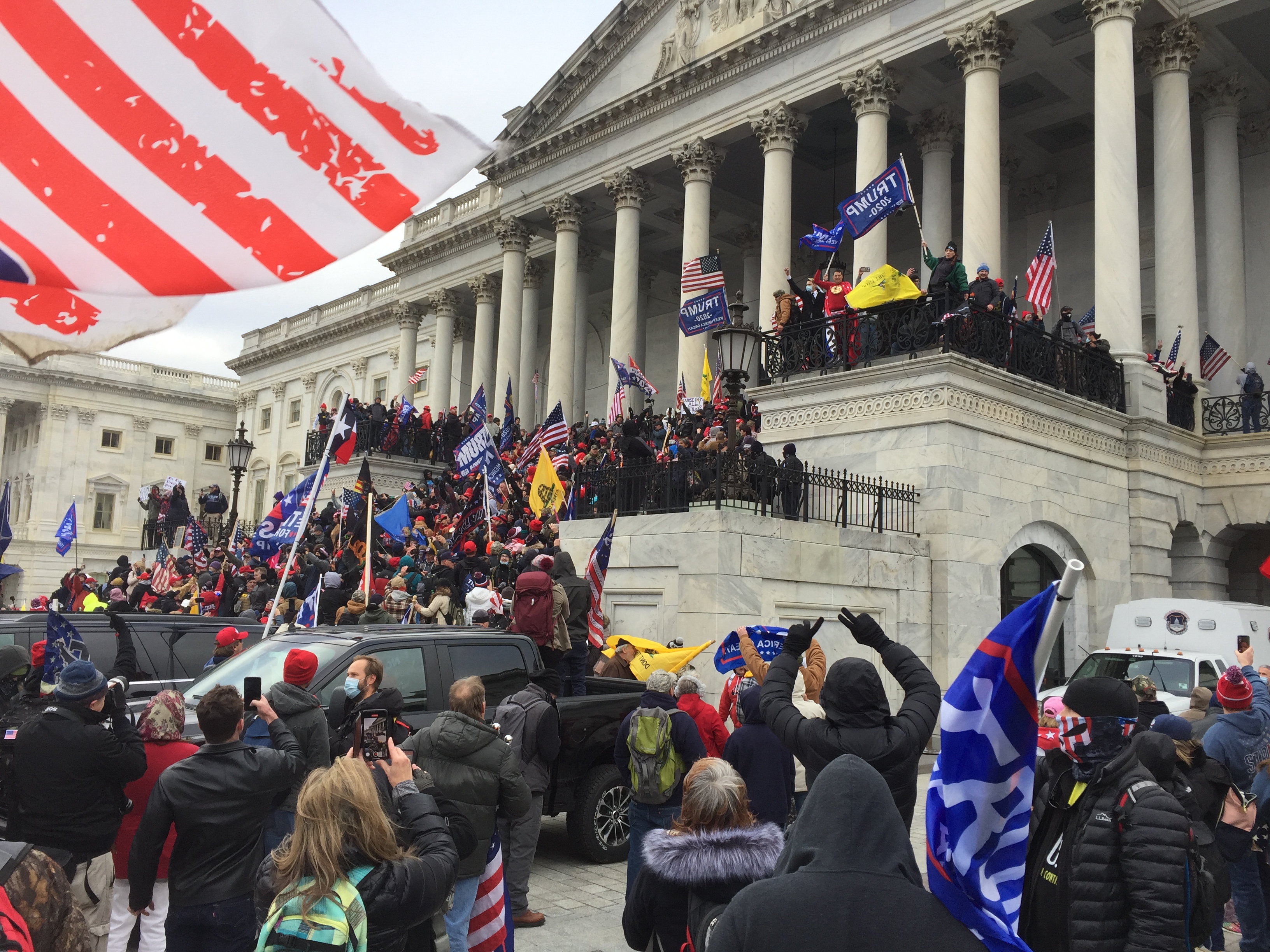Following 2020, a year of chaos, record turnout for change and the deepening feelings of distrust in the electoral process, there are a number of questions on how all of these factors will play out in the 2022 midterms. Many speculate that the same pattern of party control will switch from Democratic to Republican and that the next two years will usher in a period of governmental stagnation, which will halt any future plans for Biden’s agenda. With this ineffective method that is the electoral process, we rarely see any major shifts in political affiliation. Until the two-party system is reformed, we will live in this constant flip-flopping of political power, devoid of any major changes from the status quo of the two-party system. This is part one of a series of articles, tracking the 2022 midterms, the political shifts in the U.S. following the chaos, and the breakdown of normalcy in 2020.
This series will cover a lot of the major details that can possibly shift the current state of the nation, including the political distrust in post-2020 election cycles, the redistricting following the census count, the first year and a half of a new presidential administration and the effects of a closely split House and Senate. There will also be a lot of questions on the turnout of this election after a lot failed to fundamentally change, following the massive pushes in 2020 to oust former President Trump.
As we’ve seen, President Biden has had to change course to even come close to passing the agenda he promised on the campaign trail. Also, there is the risk that people who fell for the “Stop The Steal” could be susceptible to committing violence to election workers. That will forever change how the votes are counted and polling stations are overseen. Another fear is that there could be a number of Trump allies who will (and already have) start to dominate local politics in different states, from school boards to secretaries of states, and other positions that will give them more power to their vision of legally having ways to be able to change, and challenge the results of elections. As of Mid-March 2022, Texas is the only state that has begun its primary and is one of many potential swing states that has seen changes to its voter demographic in recent years.
The First Major Election in Post-2020 America
The election in 2020 will stand out as one of the biggest threats to political stability the U.S. has ever seen, from the claims of voter fraud to the brazen attempts to interfere with the electoral process and the politicians who were complacent in letting these threats continue. It will be the first time that we will see the residual effects of 202, the consequences of political distrust and the large-scale inability to accept the results of a free and fair election.
The threats don’t only pose a threat to elections from a voter’s standpoint, as elections are also under threat from within. Poll workers and auditors are leaving their positions in record numbers following intimidation, on life, property and their job. This is just a few ways that the GOP and Trumpism are going to impact elections in the future. 2022 will be a small sample of what elections could look like in the foreseeable future, with the combination of emboldened far-right militias, politicians who defend the militia’s actions and people with far-right ideologies running for positions of power, and offices that grant electors constitutional authority.
Democrats failed to apply any countermeasures to threats posed to future elections, especially when it came to the rights of minority voters, as Democrats sunk two separate voting rights acts. These bills were intended to undo some of the damage inflicted by Republican voter suppression bills, but the Dems were brought to a halt in the Senate. These failures in the Senate were due to the filibuster and inaction by Biden. By having these two legislative packages not pass, it gave the power to states to enact their own voting rights policies. This gave way to allow 19 states to implement legislative packages and laws that greatly restrict access to the polls for millions of voters of color.
The response to voter fraud: waves of voter suppression
In 2020, following the election of Joe Biden, many Trump supporters, and the former president himself, pushed the idea that the election was stolen, rigged, and riddled with voter fraud. This is now known as the Big Lie, a movement that aims to delegitimize the electoral process, and democracy as a whole. This in turn led to politicians in Republican-controlled states to change laws to make voting more difficult for vulnerable populations and people of color. The waves of voter suppression bills that made it across the desk of various governors, will change how people vote and how many people vote in each election. In each state where these bills are taking effect, voter numbers are already drastically decreasing among minority voters, whom these bills were designed to target.
Purging voter rolls, and giving less time to verify, to correcting errors on mail-in ballots, are just a few examples of what these voter suppression bills were created to prevent. The new laws are much less tolerant to errors, which had a substantial effect, especially in a local election in Atlanta back in late 2021, which saw “voters who sought mail-in ballots were rejected at a rate 24 times higher than in the 2020 elections according to Georgia voting records…” and “…if this same rate of rejection had occurred in 2020, that would have accounted for about 52,000 fewer votes, in an election separated by just over 11,000.” According to data collected by Mother Jones.
In a county in Texas, new voter suppression laws that were passed in 2021 accounted for a sharp increase in rejected mail-in ballots in a majority Democratic region of a typically Republican state. By having this large number of rejected mail-in ballots, election results may be completely changed, and a large part of the voter base will be further disenfranchised from voting in the future, and having their voices heard. This is just another major example of how voter suppression will sway the vote in the Republicans favor in the coming elections.
NEW: Mass voter suppression is occurring in Texas right now — nearly 38% of all absentee ballots in Harris County, a major Democratic stronghold, have been rejected so far for ID technicalities largely resulting from the Texas GOP’s new voter suppression law.
— Kitty Kingdom (@TheOwner04) February 17, 2022
The effects of voter suppression in each of the 19 states have yet to be seen. Many of these bills have shown on a small scale, in local elections, that they are capable of changing the outcome of an election to the benefit of the radicalized Republican Party, backed by proponents of “The Big Lie,” and their dangerous narratives.
How will gerrymandering impact changes to the House of Representatives?
The redistricting process that happens every ten years following census counts can have major effects on who has power in the U.S. House of Representatives over the next decade. Often parties use it to their advantage to gain more power and exploit the concentration of certain populations by drawing very specific boundaries to their districts. Gerrymandering has been used to grab onto power and build more seats of one party over the other, by splintering and dividing the electorate into different areas. By doing this, politicians from both sides can manipulate the population to fit their political goals, though this is more easily done in states that don’t have independent commissions to draw congressional maps.
States that have had more drastic changes to their electoral maps are more likely to switch power in congress, as states combine districts that went for Republicans in the 2016, 2018, and 2020 elections, which will give them more seats than their Democratic counterparts. Though some of the states that tried to implement biased maps have been rejected by State Supreme Courts, which have powers to act as independent commissions. Still, some states are able to pass these heavily biased maps if one party has control of the legislative, executive, and judicial branch of that state.
The Supreme Court decision in favor of Alabama’s gerrymandered Congressional map is yet another attack on the Voting Rights Act and the right to vote.
Gerrymandering is undemocratic and limits the power of Black people and other communities of color.
— Lawyers' Committee ☎️866-OUR-VOTE (@LawyersComm) February 17, 2022
For example, in Alabama, the legislator-led commission on drawing congressional districts which heavily favored Republican candidates and their voters. They diluted the votes of minorities, which is a violation of the 15th Amendment and section 2 of the Voting Rights Act of 1965 and takes a lot of voting power away from the Black communities that are centered in urban areas, forcing them into a single district. Unlike other states, the use of this heavily Gerrymandered map was approved by the Conservative majority of the Supreme Court, reaffirming the fact that there will be little oversight by higher courts to prevent the dilution of voters, and the biases that it grants to the Republican party for the next ten years (as maps won’t change again until 2032).
Is a Republican wave likely?
The Republican wave theory is based on precedent. Democrats currently have control over the executive and legislative branch, but in past midterm elections, the party in the White House has lost power. This means the last two years of Biden’s presidency will potentially be a period of political inaction, and broken bipartisanship.
There are also many signs from the 2021 elections that show that the idea of another midterms switch in party alignment is certainly possible, as staunchly blue states, such as California and New Jersey, nearly lost their governors in very tight races to their Republican challengers. This was a showing of strength from Republican voters, and a sense of less urgency to vote was exhibited amongst Democrats, many of whom are fed up with politicians that have failed to make big parts of Biden’s agenda a reality. This could make a Republican wave much more likely to occur.
With this uncertain voter base, a lot more people could potentially lean toward independent or green party politicians, who have considerably less mainstream support, which would spread out votes. This exodus would ultimately drain the power from many Democrats who are backed by the Democratic National Committee. Democrats within the party are also absorbed by infighting over policies, and how to communicate to a voter base that is so politically spread out. Also, the divide over different aspects of public policy, like “Defund the Police” and lessening the restrictions on migration on the Southern Border, as a way to pull away fringe voters that may see some Democrats as too relaxed on issues that are deeply partisan. If Republicans are able to exploit and increase the attacks on certain policies peddled by Democrats, there is most likely going to be a shift away from the left if the Republicans can paint it as some radicalized policies that will make some moderates concerned for their safety.
The continuation of COVID-19 regulations and other similar policies, which are being upheld by many Democratic leaders throughout the U.S., have come under fire from a lot of people, as weariness grows around restrictions from the pandemic. While this might not be a precursor to a red wave, in San Francisco there was the recall of three school board members who had kept schools closed beyond what many saw as necessary, putting restrictions before the consideration of mental health and other issues. Most of the voters in this small citywide recall are registered as independent, a sign of the potential leanings of many centrist voters in the upcoming election, not just in San Francisco, but in cities across the U.S. that were previously considered “uncontested.” These regions may be more of a battle for Democratic candidates.

Will voting distrust impact turnout?
Republicans voting patterns will change, as a lot of people have lost faith in the system. False claims of voter fraud, hacked voting machines and manipulated vote counts are swaying some to distance themselves from political action. It is unlikely that this level of distrust will make any major shifts in their choices being overtaken by Democratic counterparts in their states.
For far-left Democrats, it’s less about distrust, but more about having doubts in the system being able to change enough to see a difference in government. Voting in 2022 will be more focused on local elections, as grassroots organizers target smaller political seats with much less enthusiasm and hope than the 2020 election cycle, when a big contingent of Democratic action and organizing was going against Trump. This is not the case in this year’s midterms, which has led to political apathy, and with that a lower overall voter turnout for the Democratic party.
In both major political parties, there is widespread agreement that small-scale local elections are more trustworthy, and are more valuable to bringing about change, and are overall more trustworthy versus those held on a national level. It is unclear why this is, as people vote on the same ballot and use the same machine to vote in all levels of an election. If voting on a wider scale will prevent a number of Trump voters from the polls, the likelihood of a so-called red wave becomes less likely.
How will mail-in voting change the way we vote?
In states like California, where voting by mail is now implemented for current and all future elections, ballots are mailed to every registered voter in the state, but options still remain for in-person polling locations. The question now is, how will this accessibility impact willingness to participate? These changes to voting arrive as anger among Democrats, who are the main voter demographic actively using mail-in options, has grown with the stagnation in government. It is uncertain how useful these policies will be moving forward in keeping people engaged at the polls, because people are not just going to vote if it is accessible to them, it also hinges on feeling confident in the government to follow through on campaign promises, and being effective in positions of power. Due to this record low government trust, it remains to be seen if people will use this unprecedented access to voting to the same lengths as in 2020.
How are the rapid changes in COVID-19 policies going to shift Democrat’s success?
The rapid changes in COVID-19 restrictions and policy are not completely based on science but rather on political decisions that Democrats are making before the elections this year. Dems are shifting, as many are growing weary of the impacts that COVID has had on their lives, and Democrats have had poor polling results and extremely tight elections in states that have had extreme responses to COVID-19. In the 2020 elections, it was all about doing the opposite of the Republicans, and their policy decisions to do little about the pandemic. In reality, the tight COVID policy and GOP opposition was to win at the polls. Now Democrats need to find a way to appease their voter base before losing ground in the upcoming elections. Targeting COVID was also the source of strength for a lot of Republicans in the 2021 Governor elections, which startled some, and also impacted policy regarding the future of COVID-19 restrictions. If the rollback of restrictions continues, the same force of Republican voters may not be felt, as a lot are voting on singular issues in relation to what their politicians are promising to do if elected when it comes to COVID-19 restrictions.
Looking ahead
The 2022 midterms will be something to be closely watched, through pointers from 2020, changes in voters rights, the continuation of COVID-19 policies, voter apathy, Republican motivation and a fractured nation. This year’s election will paint a clear picture of what is to come in the next few years, when it comes to elections, and the political leanings of the nation, and potentially an early forecast for the 2024 presidential race.
This series of articles will continue throughout the midterms cycle, bringing you analysis of coming primaries, polling and the impact of changing population centers.
Featured Image via Carolyn Kaster




